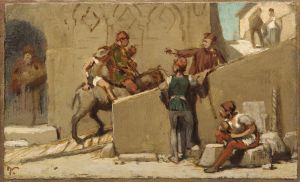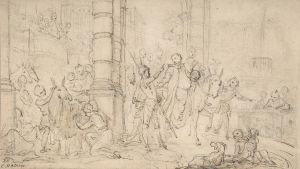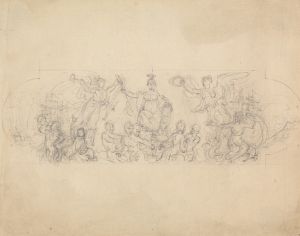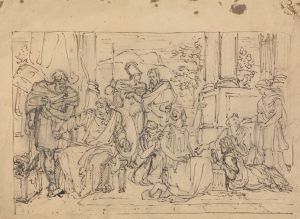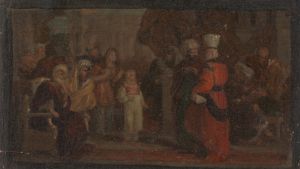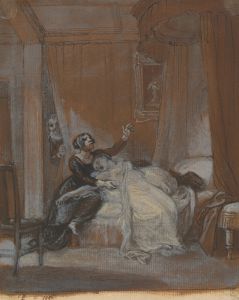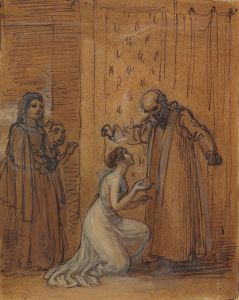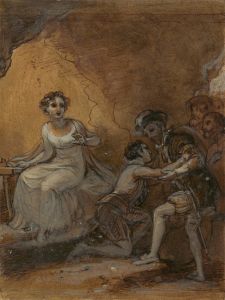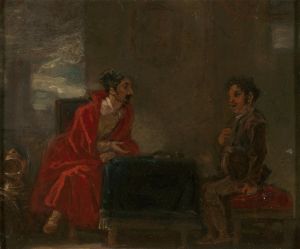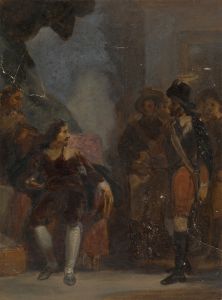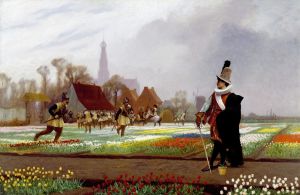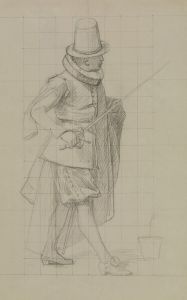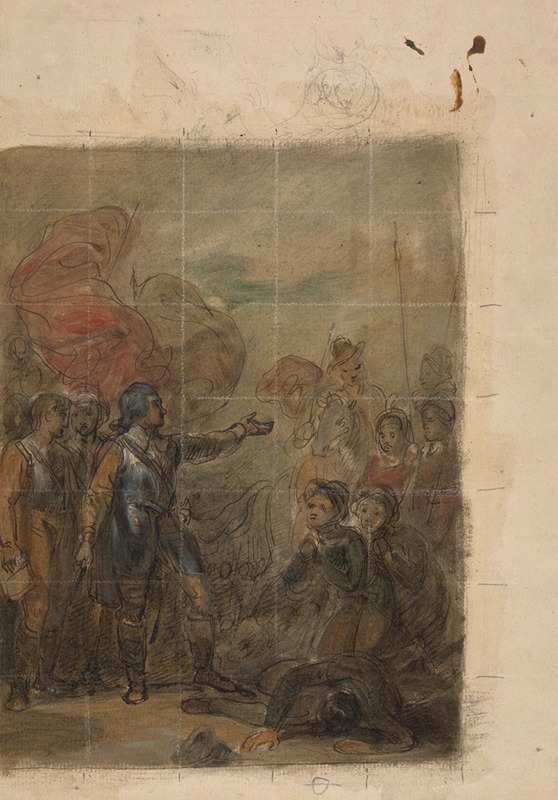
Scene from Don Quixote
A hand-painted replica of Robert Smirke’s masterpiece Scene from Don Quixote, meticulously crafted by professional artists to capture the true essence of the original. Each piece is created with museum-quality canvas and rare mineral pigments, carefully painted by experienced artists with delicate brushstrokes and rich, layered colors to perfectly recreate the texture of the original artwork. Unlike machine-printed reproductions, this hand-painted version brings the painting to life, infused with the artist’s emotions and skill in every stroke. Whether for personal collection or home decoration, it instantly elevates the artistic atmosphere of any space.
"Scene from Don Quixote" is a painting by the British artist Robert Smirke, created in the late 18th or early 19th century. Smirke, born in 1752 and passing in 1845, was a notable painter and illustrator known for his works that often depicted scenes from literature and history. His artistic style is characterized by a keen attention to detail and a delicate touch, which made him a prominent figure in the British art scene during his lifetime.
The painting "Scene from Don Quixote" is inspired by the famous Spanish novel "Don Quixote" by Miguel de Cervantes, first published in two parts in 1605 and 1615. The novel is considered one of the greatest works of fiction and is a cornerstone of Western literature. It follows the adventures of the nobleman Alonso Quixano, who reads so many chivalric romances that he loses his sanity and decides to become a knight-errant, adopting the name Don Quixote. Accompanied by his loyal squire, Sancho Panza, Don Quixote embarks on a series of misadventures, driven by his idealistic quest to revive chivalry and serve his imagined lady love, Dulcinea.
Smirke's painting captures one of the many vivid and humorous episodes from the novel. While the specific scene depicted in Smirke's work is not universally agreed upon, it is typical of his approach to focus on moments that highlight the novel's blend of comedy, pathos, and social commentary. Smirke's ability to convey the essence of Cervantes' characters and the absurdity of their situations is evident in his detailed rendering and composition.
Robert Smirke was a member of the Royal Academy of Arts, having been elected as an associate member in 1791 and a full academician in 1793. His works were well-received during his lifetime, and he was known for his illustrations of literary subjects, including those for editions of "Don Quixote." Smirke's illustrations contributed to the popularization of Cervantes' novel in the English-speaking world, as they provided a visual accompaniment to the text that captured the imagination of readers.
The painting "Scene from Don Quixote" reflects Smirke's interest in narrative art and his skill in bringing literary characters to life. His works are characterized by their clarity, elegance, and the ability to convey the spirit of the stories they depict. Smirke's contribution to art and literature is significant, as he helped bridge the gap between visual and literary arts, making classic texts more accessible and engaging to a broader audience.
Today, Robert Smirke's works, including "Scene from Don Quixote," are appreciated for their historical and artistic value. They offer insight into the cultural and artistic milieu of late 18th and early 19th century Britain, as well as the enduring appeal of Cervantes' masterpiece. Smirke's paintings and illustrations continue to be studied and admired for their contribution to the visual interpretation of literary classics.





